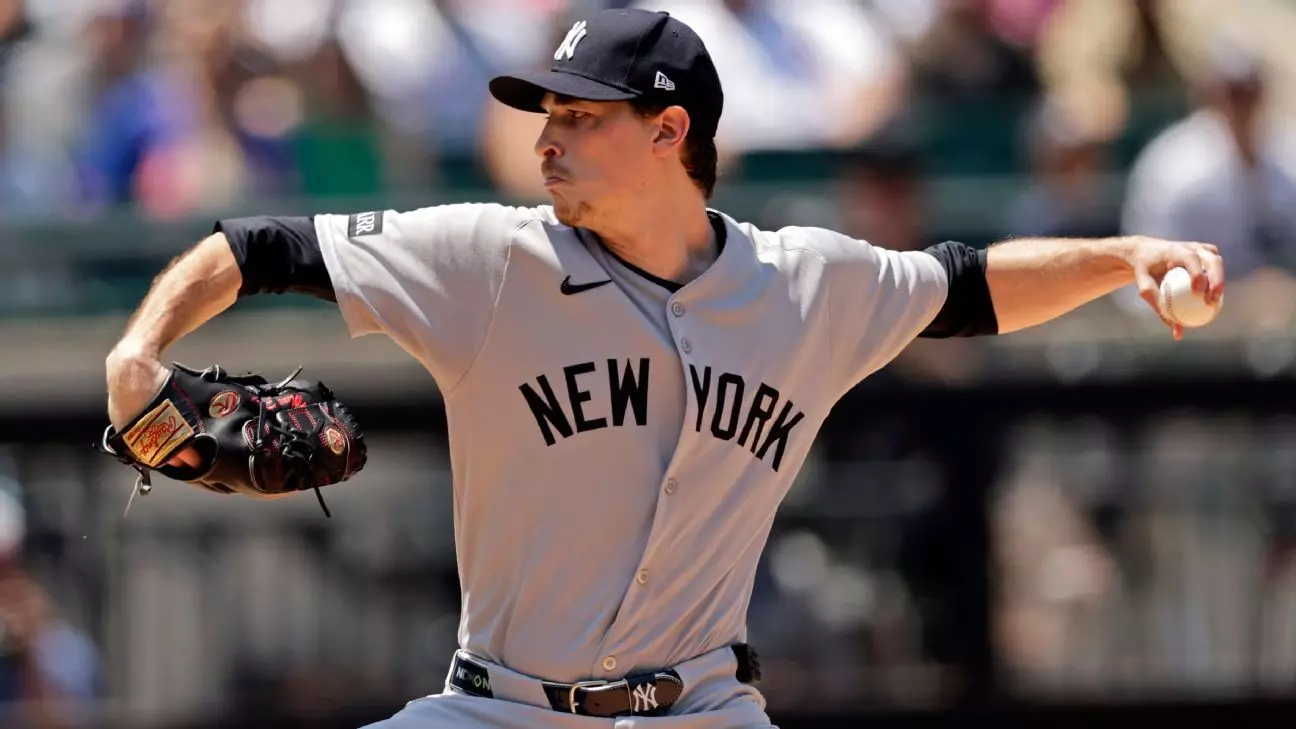In the high-octane world of Major League Baseball, even the most elite athletes are not immune to physical setbacks. Max Fried, a cornerstone of the Yankees’ pitching staff, recently encountered a setback that underscores how delicate top-tier performance can be. His injured finger, afflicted by a stubborn blister, has cast a shadow over his promising season and raises questions about the team’s reliance on health and resilience. Fried’s situation exemplifies a broader truth: the physical toll on pitchers and the unpredictable nature of injuries can dramatically alter team dynamics and playoff ambitions.
Fried had been executing at an extraordinary level, establishing himself as a reliable ace with an impressive 11-3 record and a 2.43 ERA. His performances, especially earlier in the season, complemented Gerrit Cole’s dominance and bolstered the Yankees’ aspirations. However, that upward trajectory was disrupted when a blister on his left index finger forced him out after just three innings—his shortest start since signing a lucrative eight-year deal. This setback not only dampens Friedman’s individual momentum but also amplifies concerns about how much the Yankees depend on him staying healthy during critical junctures.
Injury Management: A Critical Art in Modern Baseball
Fried’s experience reveals how managing injury, especially recurring ailments like blisters, has become an intricate part of a modern pitcher’s career. Historically, blisters might have been brushed aside, but today they are recognized as significant hurdles that can compromise a player’s effectiveness and longevity. Fried himself has battled blisters multiple times in his career, with previous episodes involving lengthy stretches on the injured list. His case illustrates how recurring physical issues can subtly erode a pitcher’s consistency, despite their talent and preparation.
The Yankees’ strategy to cope with Fried’s health involves a combination of rest, treatment, and cautious evaluation. Manager Aaron Boone’s comments highlight an effort to balance recovery with team needs, an ongoing challenge in a sport where a single injury can ripple into missed opportunities and postseason vulnerabilities. Fried’s future participation remains uncertain, and his case underlines the importance of injury prevention and personalized treatment that modern sports medicine strives to perfect.
Reliance on a Fragile Foundation: The Yankees’ Broader Strategic Implications
The Yankees have become notably dependent on Fried’s performances, especially with Gerrit Cole sidelined due to Tommy John surgery. Fried’s dominance earlier in the season made him a linchpin in their playoff hopes. Still, his recent struggles and physical vulnerabilities reveal an unsettling reality: even the most talented players are only as dependable as their health permits.
This dependence poses a strategic dilemma for the team. If Fried continues to face injury issues, the Yankees’ pitching depth and postseason prospects could be compromised. His replacement efforts, while commendable, cannot fully replicate what he brings to the mound. Furthermore, Fried’s upcoming participation in the All-Star festivities demonstrates the complex balance between showcasing talent and managing physical risks—a balancing act that can define or derail a team’s season.
While the Yankees brace for potential return to form, their reliance on players prone to recurring injuries exposes a fundamental vulnerability. Success in this sport is often hinged as much on resilience and health as on raw talent. Fried’s current predicament is a stark reminder that even the brightest stars require careful stewardship to shine when it matters most.

